“Cleanse your palate with young ginger and wash it away with tea.”~ An Edomae Saying
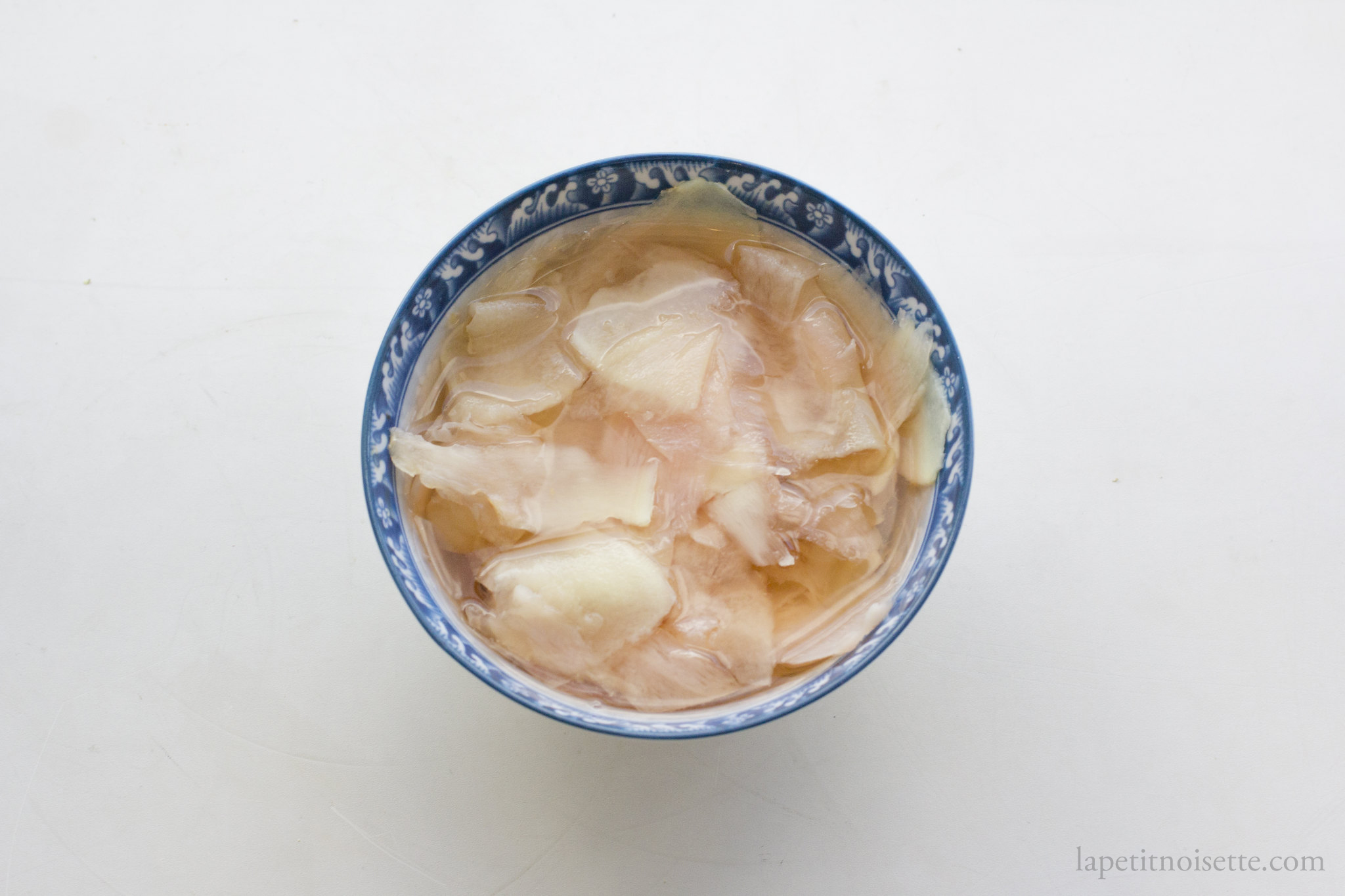
This article is part of a series on Edomae sushi.
Gari, sometimes known as sushi ginger, is young pickled ginger usually served alongside sushi at both high end and low end sushi restaurants. The ginger used for pickling is young ginger (新生姜) specifically, which comes into season in spring from April to June. The young ginger used for pickling at our restaurant however, is available all year long.
This is because the young ginger that is harvested during spring is then stored in a cave so that supply is available all year round. The ginger loses its pink tips and tinge whilst being store but still maintains it’s taste and tenderness. The burst of spiciness of our pickled ginger is loved by most of our guest (especially the older ones) because of how it reminds them of spring.
When served with sushi, it acts like a palate cleanser to clear your taste between each piece of nigiri, allowing you to fully enjoy the differences in each type of fish. Some people also eat the ginger whilst sipping sake.
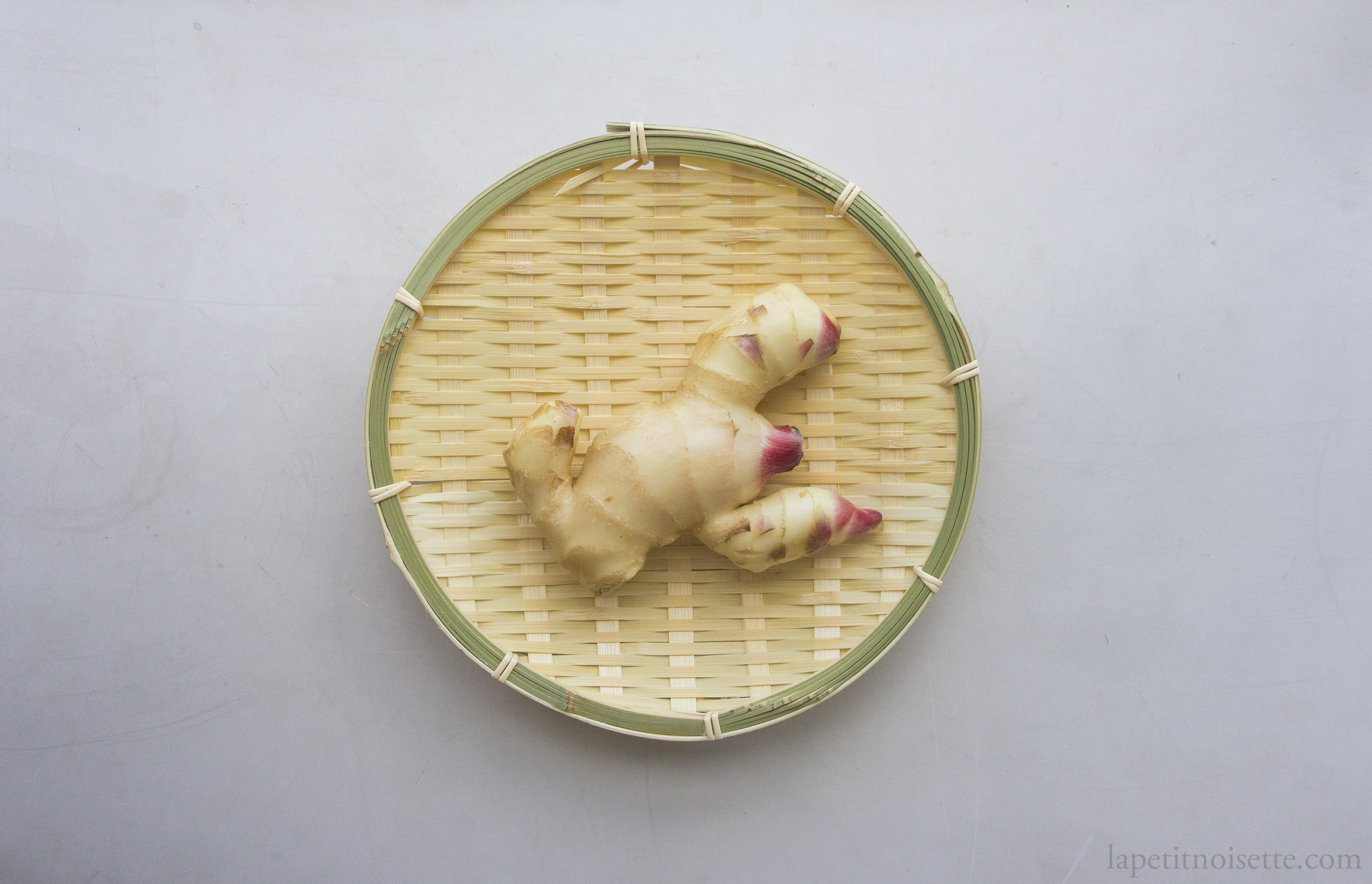
In our restaurant, we used to pickle our ginger once every week or so with white rice vinegar, salt and sugar. Young ginger is always preferable over older ginger as they have a milder spice and are much more tender. If only slightly older ginger is available, we try to grate it dinner and blanch it in hot water in order to temper the spice and make it more tender. The ginger which starts of yellow, gains a pink tinge after a few hours of pickling. Only young ginger acquires this pink tinge naturally, with older ginger remaining yellow.
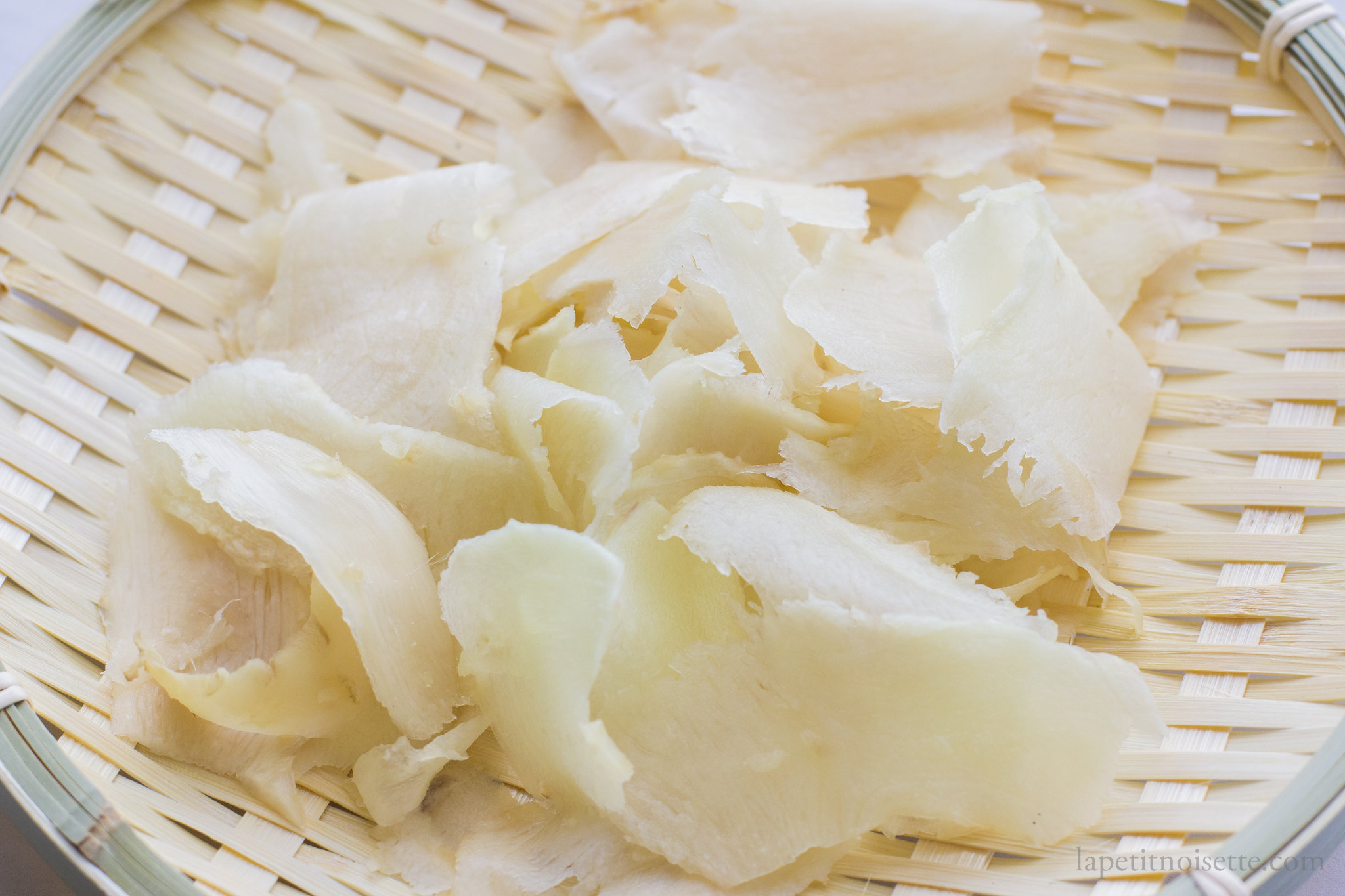
*The pickled ginger served with sushi is different from Beni Shoga (紅生姜), which is thick strips of ginger pickled using plum vinegar.
- 300g of Young Ginger
- 300ml of White Rice Vinegar
- 120g of Granulated White Sugar
- 10g of Salt
To begin, peel the ginger with a spoon.
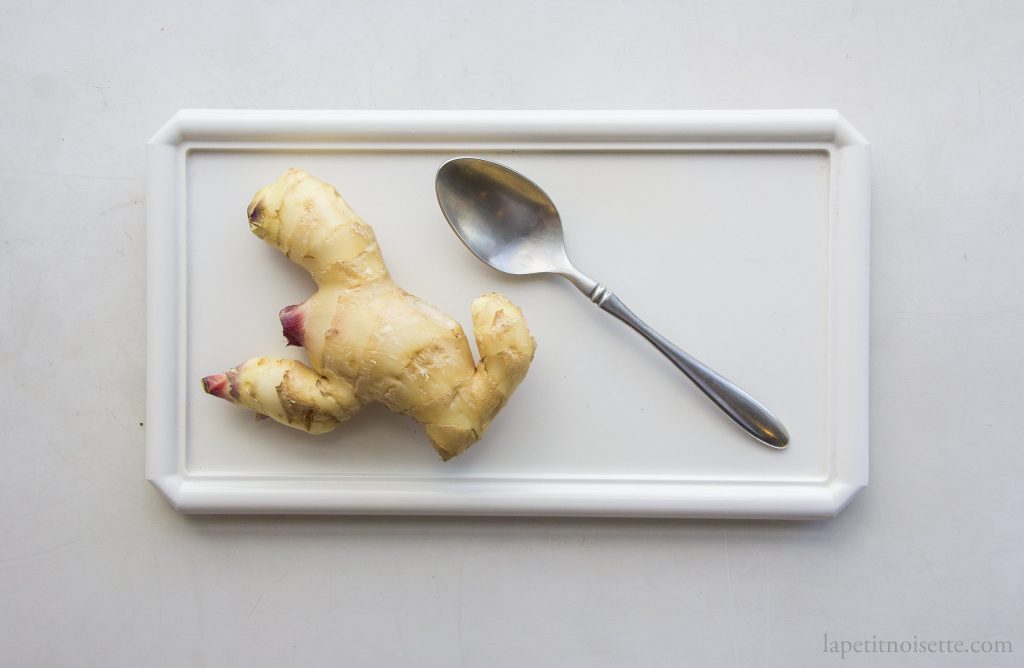
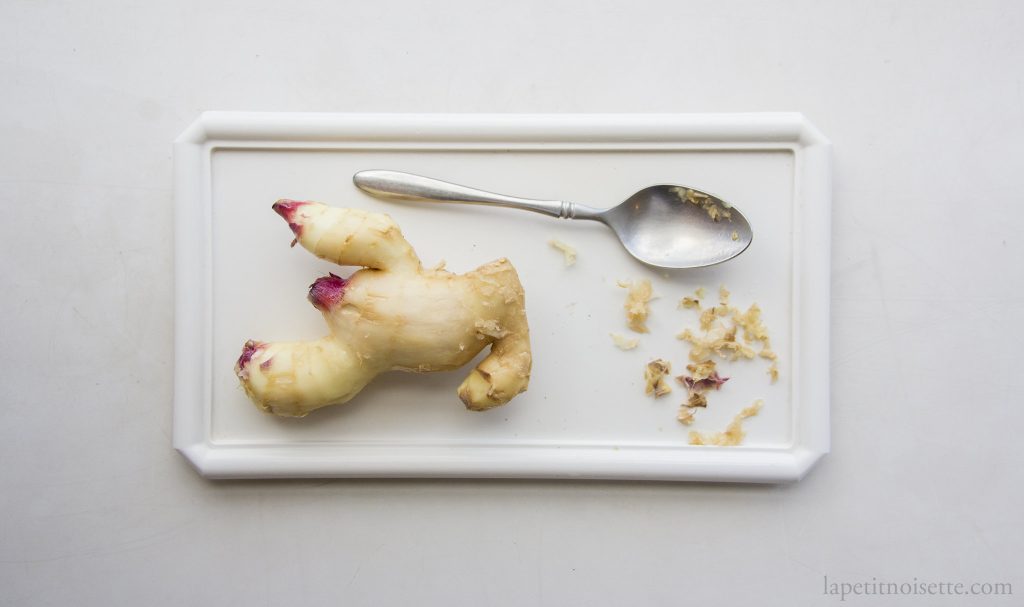
Next, shave the ginger as thin as possible. We use a peeler to peel strips away from the ginger as a mandolin produces strips that are too thick.
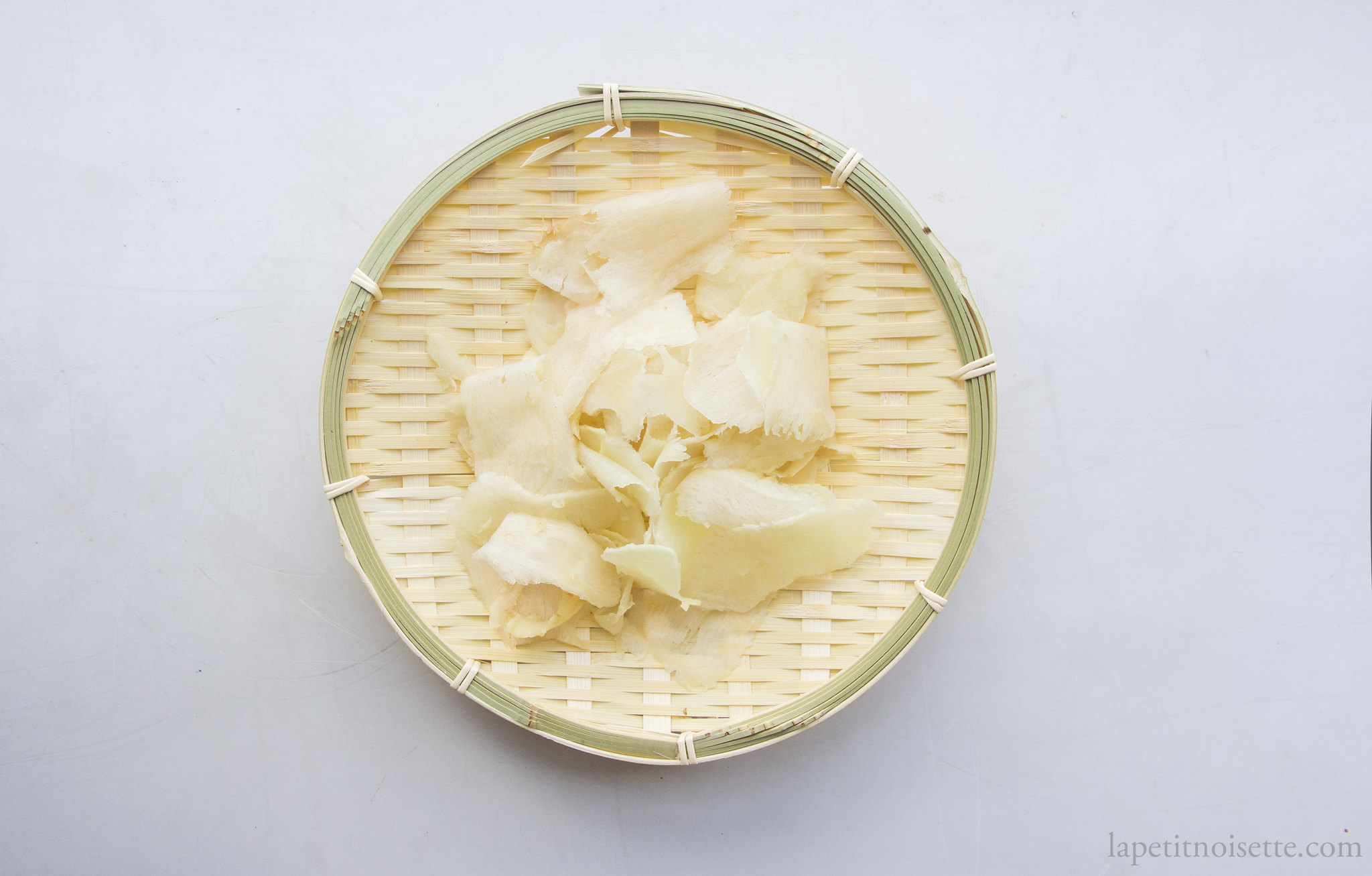
Next, we temper the spiciness of the ginger by pouring hot water on the young ginger. If the ginger is older and thus more spicy, blanc the ginger in boiling water for 5 seconds or pour two rounds of hot water on the ginger.

Next, squeeze the ginger to remove excess water whilst the ginger is still hot. We either wear plastic gloves whist doing so in the restaurant or allow the ginger to cool slightly before pressing.
The ginger absorbs water as it cools and therefore it should be pressed whilst still hot. Be careful not the tear and break the strips whilst squeezing.
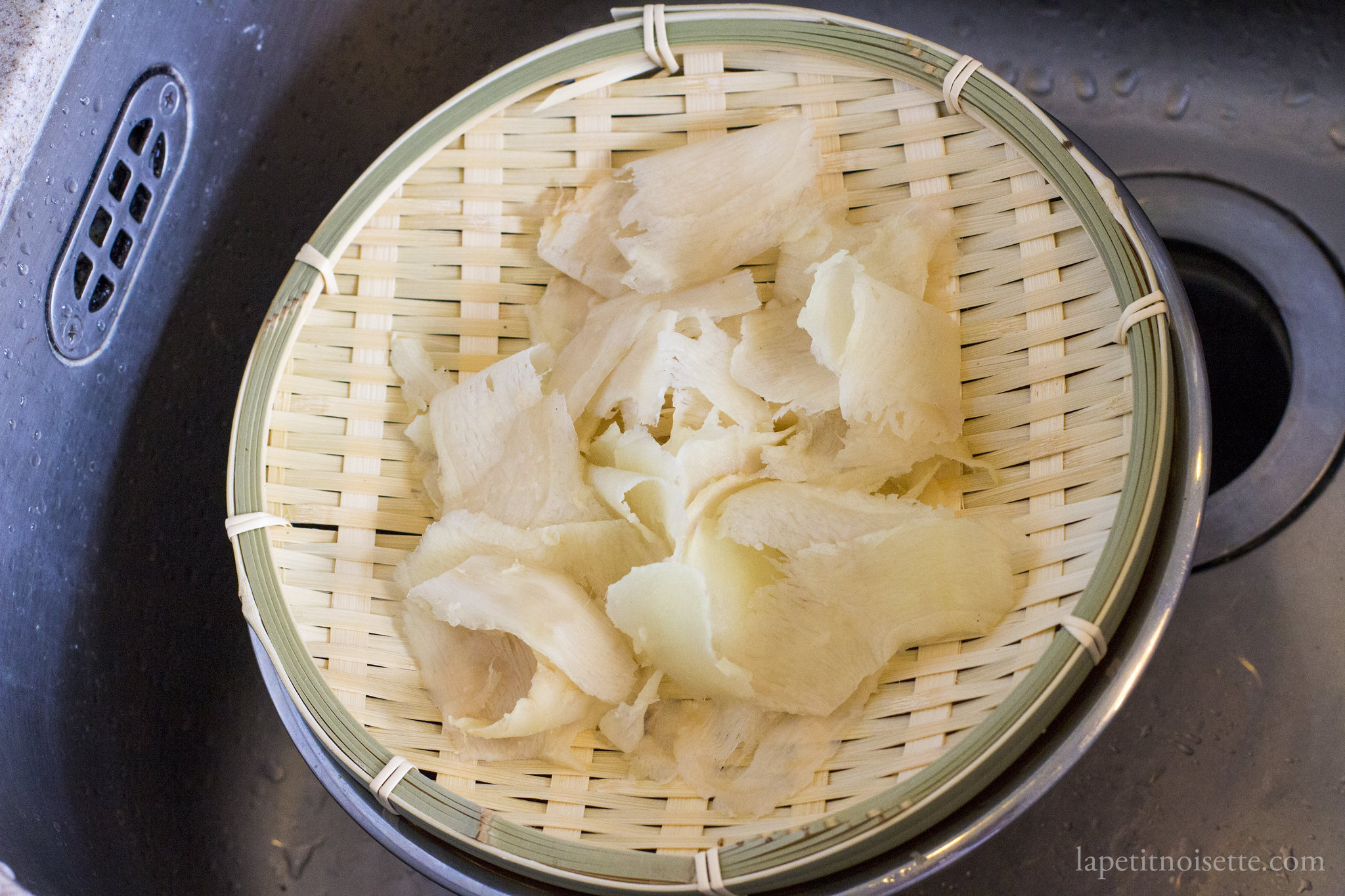
In a pot, add the white sushi vinegar, sugar and salt. Bring the pot to a boil and allow to cool to room temperature.
Add the ginger to the pot and allow to pickled for 6 to 8 hours, tasting towards the end until it is just right.
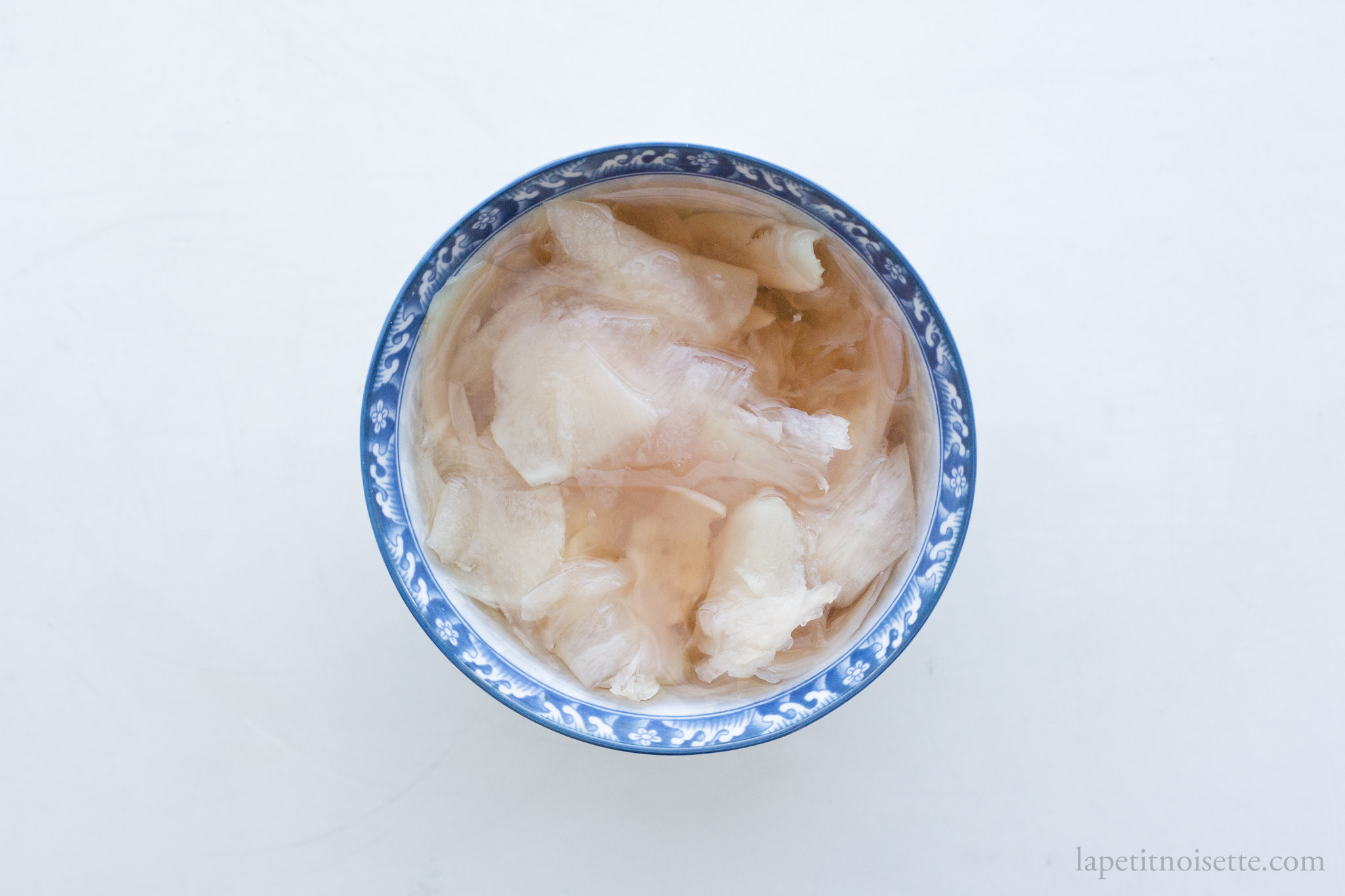
Store in a glass container with the pickling juices or in the same initial container used. Do not worry about over pickling as the strips are already so thin that they will be fully pickled after 6 to 8 hours and thus can be stored in the pickling liquid.
The ginger can be kept up to a few weeks before it starts to discolour. After discolouration, it is actually still safe to eat up to 3 months and more.